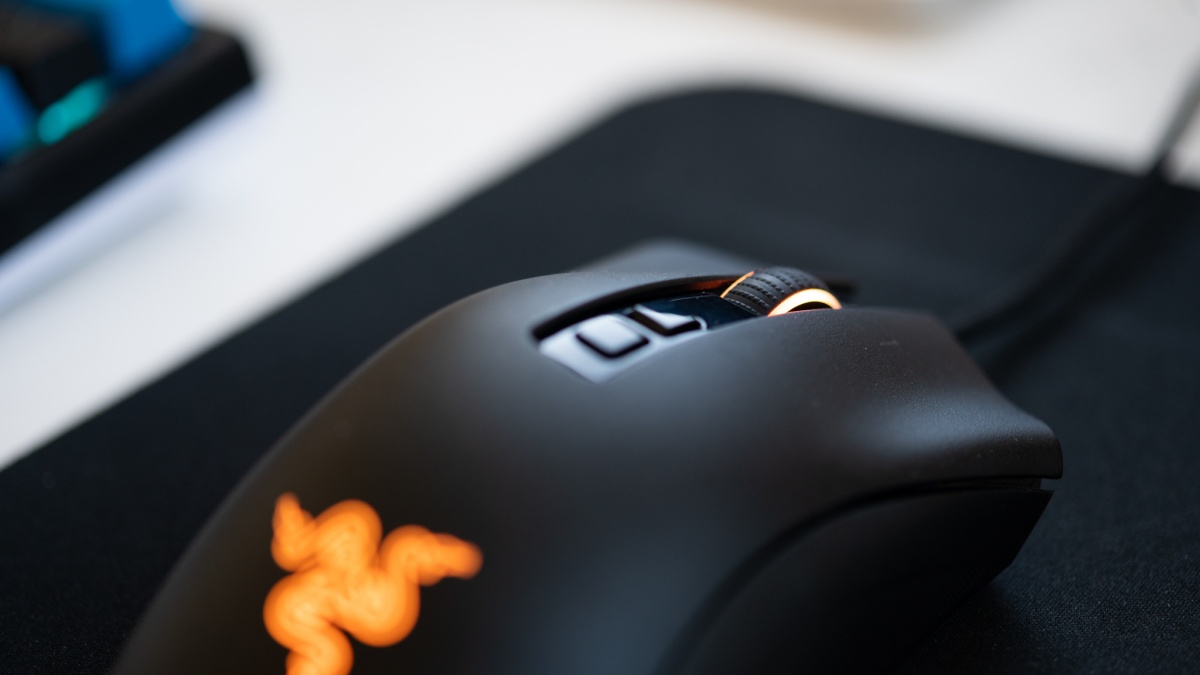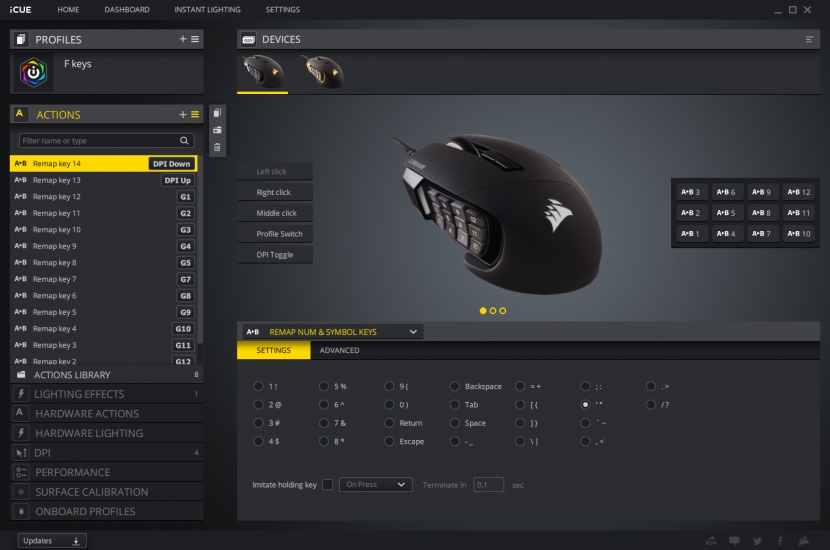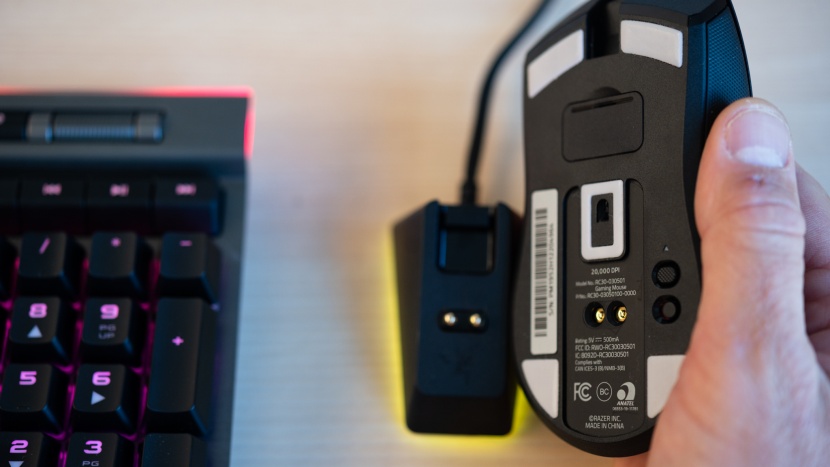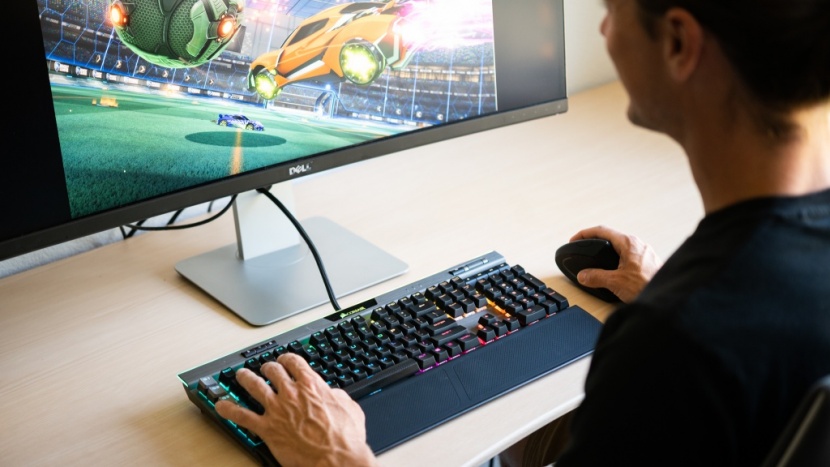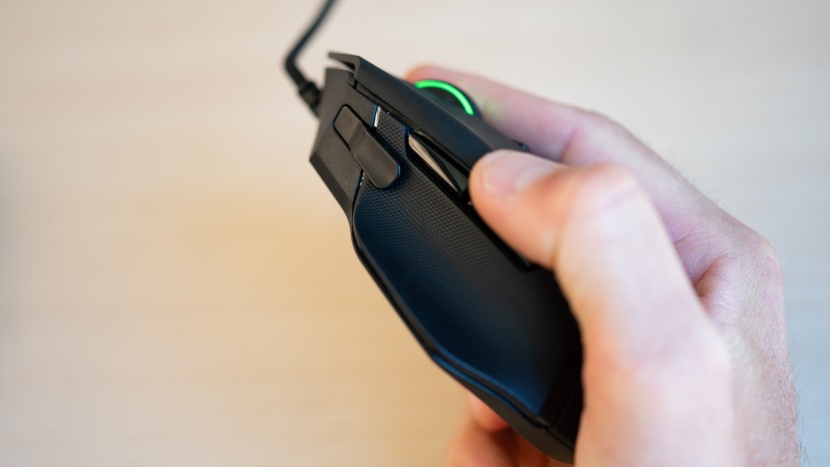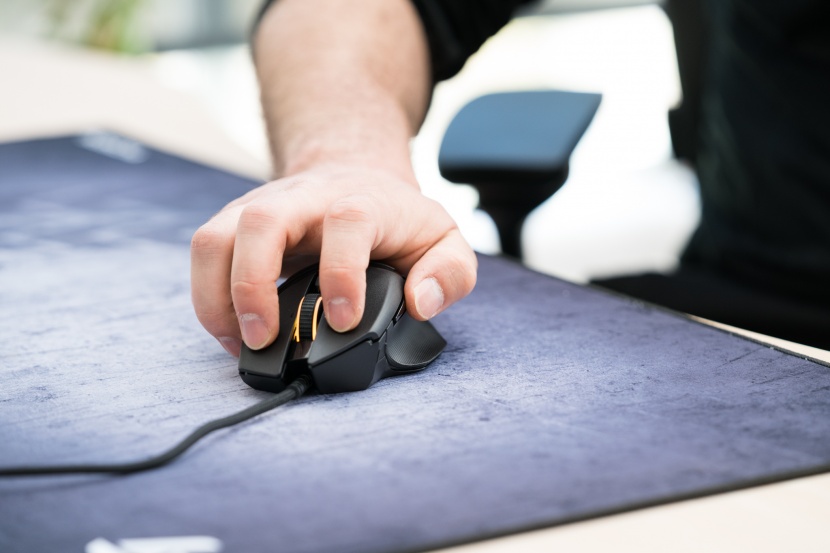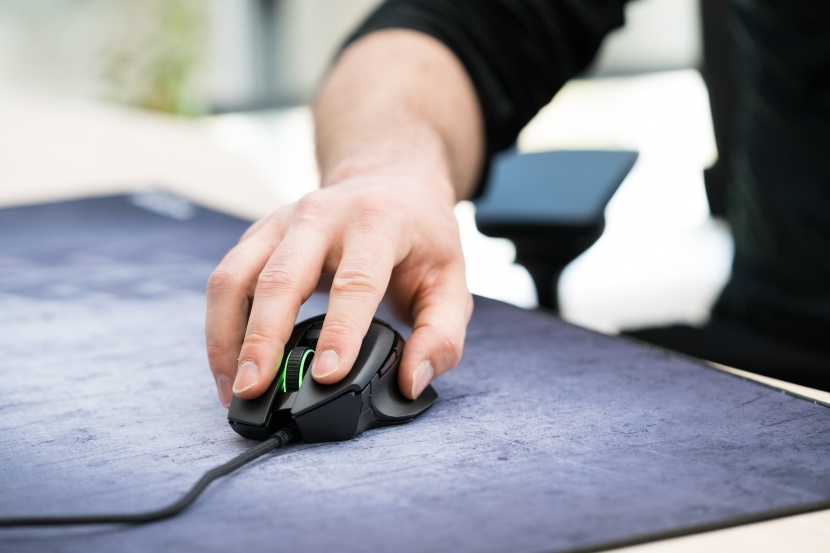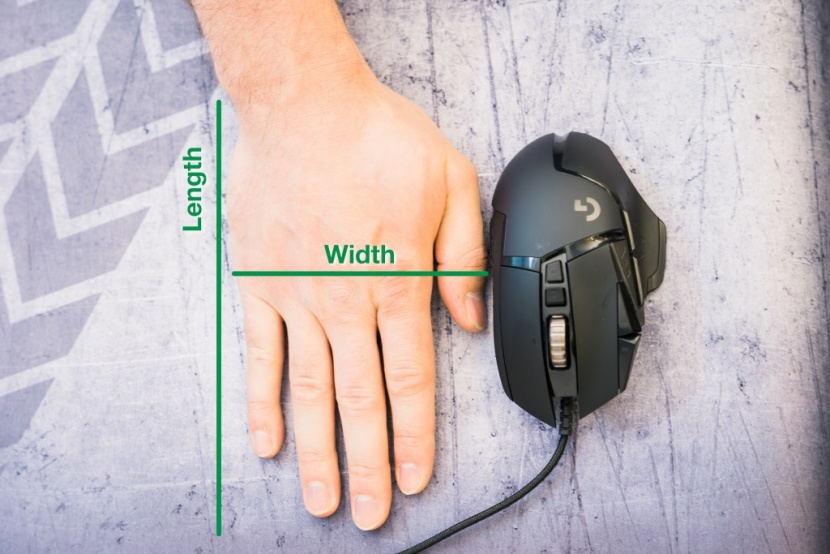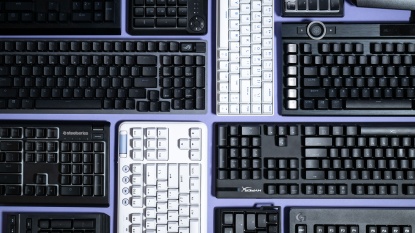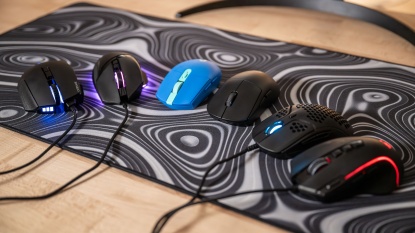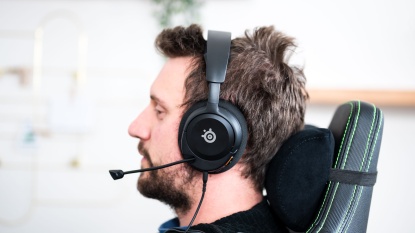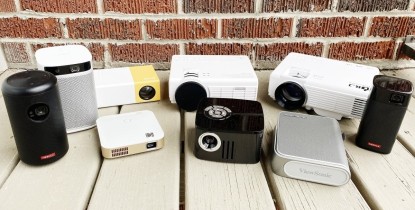If you are interested in a gaming mouse, you have likely begun to explore the vast catalog of computer games available today. If you are new to this world, it can feel like stepping into a waterfall of information that, while invigorating, can be overwhelming. Here's some good news, we know what you're feeling, and we're going to lay out all the information gained from our years of gaming experience so that you can make the best selection to up your play. The following covers the terminology, technical details as well as a breakdown of overhyped specs. Before you know it, you'll be an expert on the bleeding edge of mouse technology.
Do You Need a Gaming Mouse?
This may seem like a silly question, but it is worth considering. Gaming mice represent the top end of mouse hardware and they are not cheap. The term gaming covers a lot of ground and must be narrowed for context. For our purposes, gaming refers to computer play that requires the use of a top-rated keyboard and mouse and is action-oriented, where hardware response time and customization offer appreciable advantages. Specifically, these are First Person Shooter (FPS) games like Call of Duty, Massively Multiplayer Online (MMO) games like World of Warcraft, and Multiplayer Online Battle Arena (MOBA) games like League of Legends, to name just a few popular genres and titles.
If you are already playing or are seriously interested in playing games like those mentioned above, a gaming mouse will give you real and immediate advantages. Moreover, gaming-specific hardware will continue to meet your needs as your gaming skills progress. On the other hand, if you like to play chess, poker, or Scrabble on a screen, there is little advantage in having a high-end, expensive mouse. Assuming you fall into the prior gaming group, let's get down to brass tacks.
Why Do Gaming Specific Mice Matter?
To appreciate the advantages of gaming hardware, one must first understand that the games played with them are often played in real-time, are complex in nature, require precise movements such as aiming, and are competitive. Much like in traditional sporting scenarios, if there are two equally skilled players, the one having better equipment will have the advantage. The main advantages provided by a high-end mouse are precision, consistency, and customization. Specifically, gamers need on-screen responses that are instantaneous and matched to their gestures. Moreover, gamers need the ability to tweak the performance of a mouse to their preferences as well as the demands of the game being played.
Sensors
The sensor is the device that tracks the movement of the mouse and provides the information to the computer that translates to on-screen movement. In a bygone era, sensors were simply rollers that made contact with a ball housed in the mouse body. The ball rolled along the surface that the mouse traversed and the sensors tracked its motion. Modern mice use laser and optical sensors that record reflected light from the surface they move over. Optical sensors have become the gamer's technology of choice due to their consistency at all speeds of movement, but particularly at high speeds where laser sensors can produce jittery and unpredictable movement on-screen.
While optical sensors provide higher fidelity than their laser counterparts, there are some pitfalls shared by both that should be avoided. For example, some sensor firmware attempts to predict and “correct” the user's movements. Common actions of this sort are acceleration and angle snapping. In the prior case, the cursor sensitivity changes with the speed of mouse movement. In the latter case, inconsistent movements are scrubbed within a certain range to make, for example, a horizontal movement a straight line. A flawless sensor does not come with this kind of firmware and, thus, the movements on-screen are faithful to the hand gestures of the user. If a true gaming mouse is in order, a flawless sensor is mandatory.
Having addressed the sensor types and firmware issues, we can move on to sensor performance. There is a lot of talk surrounding polling rate, tracking speed, lift off distance, and dots or counts per inch. Let's get to the bottom of these hyped-up specs and see what really matters to the avid gamer.
Polling Rate
Polling rate is the number of times the mouse sensor registers its location per second. This per-second cycle is measured in hertz (Hz). High polling rates have the distinct advantage of providing greater accuracy in the translation of hand movement to on-screen movement. However, polling rates have reached a jaw-dropping 8,000 Hz in a few cases which lead to eyebrow furrowing, noggin scratching consideration of whether anyone — save The Flash — could process such an improvement. Generally speaking, the answer is no and so one should not be too concerned when their new gaming mouse polls at 1,000 Hz. As a final note, some folks will express concerns that a high polling rate can overload one's central processing unit (CPU). If you can run a game on your computer where a high polling rate mouse offers an advantage, then the polling rate should not be a problem.
Tracking Speed
Tracking speed is akin to polling rate as it is a measure of how fast the mouse can be moved while maintaining the fidelity of the user's movements on screen. Tracking speed doesn't pose the same problem for rapid movement gameplay as it used to because most high-end mice now boast rates in the range of 200 - 650 inches per second (IPS). To put these numbers into perspective, Keith Liddell, the world record holder for the fastest punch, clocks his fastest hand movement at 792 IPS. We lowly mortals tested our fastest mouse movement in a seated position and could barely break 200 IPS in a swinging gesture that would never be repeated in actual gameplay. The takeaway is that anything over 250 IPS is overkill.
DPI/CPI
Dots per inch, or, more accurately, counts per inch is the number of pixels that the mouse sensor can register along one inch of surface area. CPI controls the ratio of hand movement to movement on the screen, however, an increase in CPI should not be mistaken for an increase in sensitivity or accuracy. The greater the CPI, the greater the volume of extraneous information in the system that can lead to a potential error in interpretation. Many mice make claims to CPI as high as 20,000. More important than a large number of counts is that the count is adjustable. This allows one to create the optimal ratio between CPI and the cursor sensitivity software for maximum performance.
Lift Off Distance
Lift off distance or LOD is the maximum height at which the mouse will continue to track the user's gestures after leaving the surface of the desk or the mouse pad. This is an important aspect of mouse performance because one does not want the on-screen movements to shift unpredictably when recentering their mouse. Most gaming mice limit this distance to a few millimeters. However, LOD can often be regulated with mouse sensitivity settings.
Buttons
When it comes to buttons, there are two things to consider, switch type and number of buttons. Let's start with the number of buttons. There's not a ton to say here except that if you prefer to play Massively Multiplayer Online games or Multiplayer Online Battle Arena games, then a mouse with a dozen or more buttons to store macros is desirable. In general, an array of 5 - 10 buttons is plenty. This is especially true for the models that have onboard memory to store different button profiles.
Moving on to switch types. Gaming mice make use of two switch types, mechanical and optical. Mechanical switches physically connect two metal contacts to close a circuit while optical switches use a beam of light to signal a button actuation. While many in the gaming community favor the tactile feeling of mechanical switches such as Omron and Huano, these components are not without issues. Namely, these issues are click latency and bouncing.
Click latency is the time it takes the button to connect the two pieces of metal that close the circuit to send the signal. Bouncing is the phenomenon of the two contacts reconnecting after the button is released. Think of a stapler getting pushed down and quickly released. The handle will rebound a bit. With mechanical switches, this rebound can cause false signals to register. Or, if the manufacturer has introduced debounce firmware, it will limit input from that switch for a certain period following an actuation. This is a limitation that one would prefer not to have imposed on their play. Optical switches address both the click latency and bounce issues by removing the physical actuation and replacing it with light. This technology nearly eliminates latency and removes the possibility of bounce.
Weight
Few mice offer weight adjustments, so the weight of your mouse must be decided on as part of the purchase. For many gamers, the lighter the weight the better as there will be less inertial resistance to acceleration which necessarily reduces reaction time. For this reason alone, we value lighter-weight mice over heavier ones. However, this is a preferential decision so we recommend some experimentation if possible.
Gripping Style
There are three main grip types used to control a mouse. Knowing what grip you prefer will help greatly in the selection of a mouse. These grips are palm, claw, and fingertip. Of course, one can change their grip or use a variation of them. Regardless, the following are basic descriptions of the three.
Palm Grip
The palm grip puts the whole hand in contact with the mouse. An ideal mouse for this grip type will be on the larger size as it should accommodate the entire palm and extended fingers. This grip offers plenty of support and comfort but limits micro back and forth movements.
Claw Grip
This grip places the heel of the hand on the back of the mouse, with the tips of the thumb, ring, and little finger grasping the sides leaving the index and middle fingers free to access the right and left buttons. This style is a balance between comfort and quick flicking, and back and forth agility. Generally, this style works best with a medium-size mouse.
Fingertip Grip
This gripping technique removes the palm from the equation. Supposedly, it provides more dexterity and delicate action. However, it is uncomfortable and, in our opinion, not sustainable for the long term. Yet, if you favor this grip, we recommend compact, lightweight mice with flatter profiles.
Sizing
Size matters. It is important to take the time to fit the mouse to your hand and grip style. This is even more important if the mouse will be purchased online. Sizing varies from one manufacturer to the next. However, if you measure your hand from the wrist to the tip of the index finger and from the knuckle of the thumb to the outside of the palm you will be able to narrow down your fit with each manufacturer. More than just increasing performance, a proper fit will help to limit the risk of repetitive motion injury.
Skates
By this point, it should be clear that consistency and, thus, predictability, are paramount to the computer gamer. Skates play a key role in the smooth movement of the mouse. There are a variety of skate materials in use and their action depends on the surface they are sliding across. While the preferred amount of friction is certainly preferential, one should be aware that skates take some breaking-in and they also wear out over time. Some manufacturers include replacements with the mouse purchase while others sell them aftermarket. Don't be afraid to clean and eventually replace your mouse's skates.
Latency
Latency is the time it takes for a mouse input, be it a button click or motion, to translate to on-screen action. As one might imagine, this is an important aspect of mouse performance, especially if your competition has hardware that reduces this lag. Yet, with all the advancements in latency mitigation, particularly in wireless mice, one might wonder if the products have exceeded the limitations of human perception.
It was previously thought that a machine response to a human input occurring in less than 100 milliseconds (ms), or 1/10th of a second, was perceived as instantaneous (Miller 1968). However, recent work by researchers at MIT (Potter et al 2014) reveals that the human eye can detect entire images shown for as little as 13 ms. Moreover, research in detectable latency in head-mounted displays revealed that some test subjects were able to register latency between head movements and display responsiveness down to 3.2 ms (Jerald and Whitton 2011). The takeaway for this more recent work is that mice with latency in the range of 5 -10 ms are, for all intents and purposes, imperceptible to the majority of users.
If a gaming mouse seems like more than you need to surf the internet, we've also tested wireless mice. This could be a potential choice if you value being wireless over the speed and accuracy required by gaming.
Conclusion
This article on gaming mice provides all the information needed to cut through the hype and get down to the nitty-gritty details of mouse performance. We looked at all the components, including sensors, switches, and skates, as well as measures of performance such as DPI/CPI, polling rate, and latency. We also discussed sizing and gripping styles. With the information provided above, one will be well equipped to select the right mouse for their needs the first time around. And with that, it's game on.

